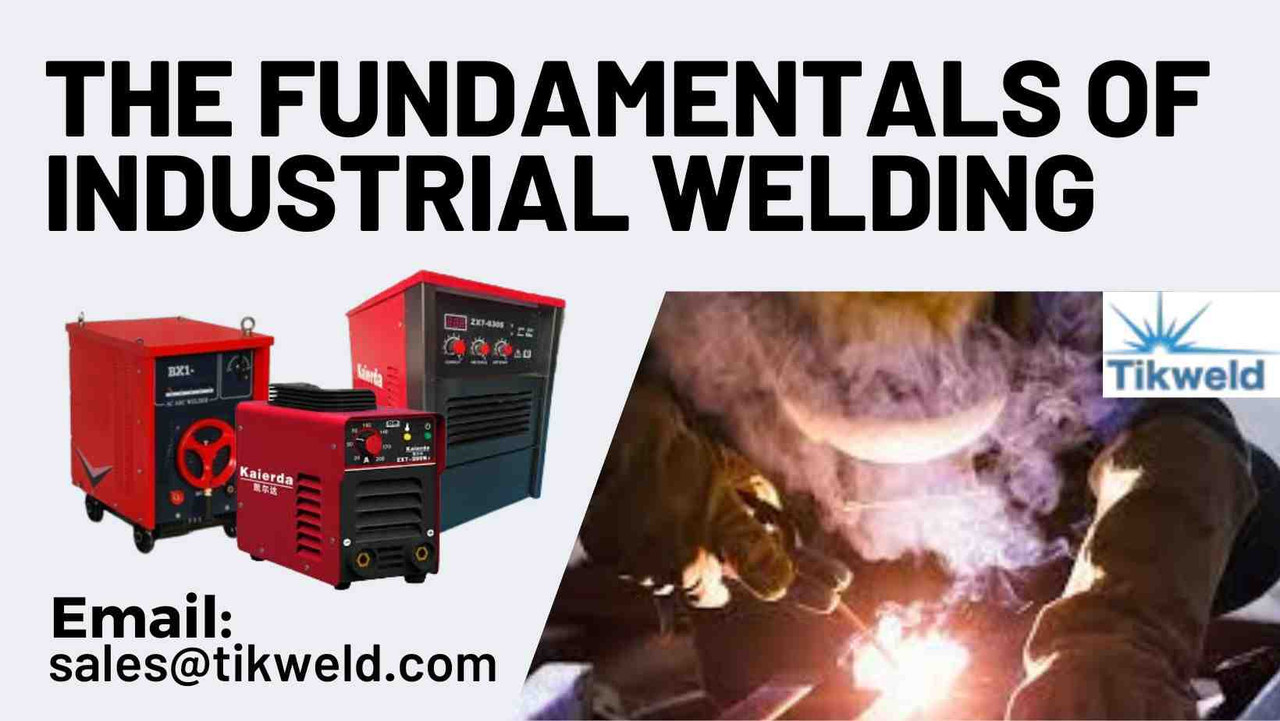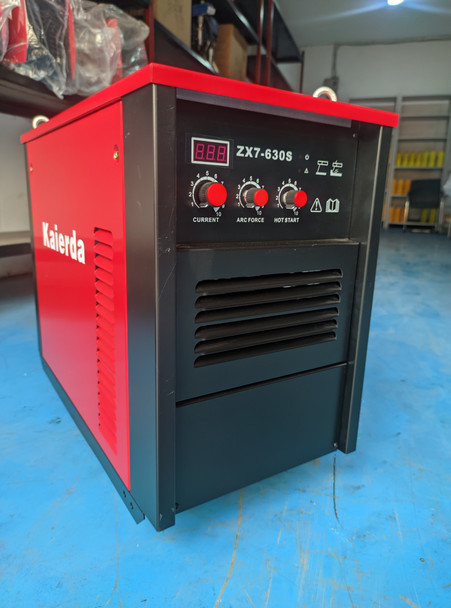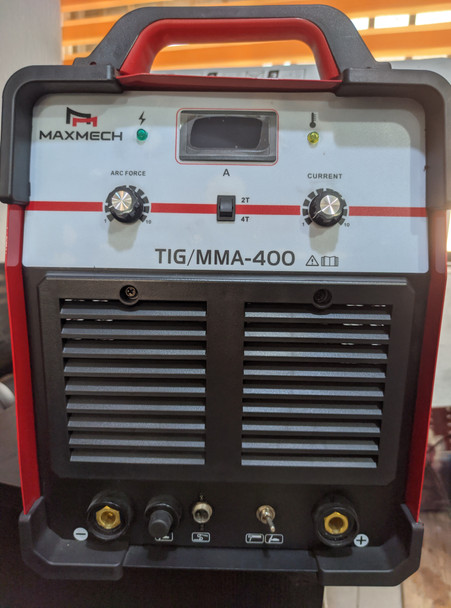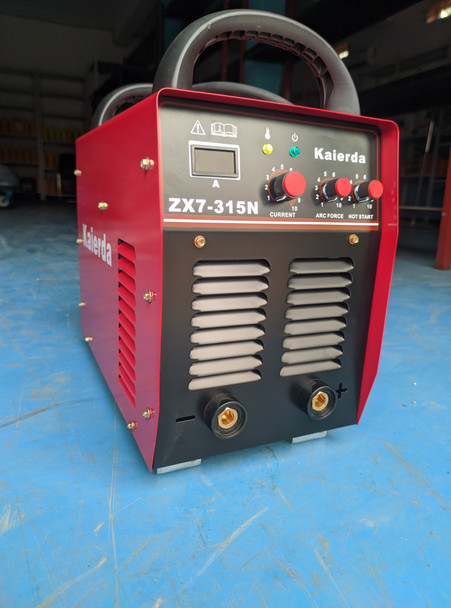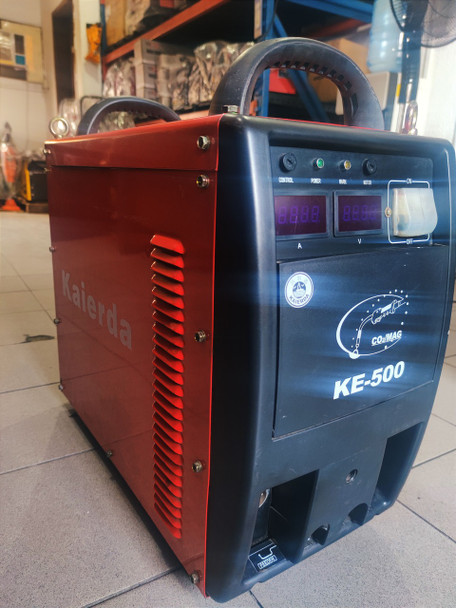The Fundamentals of Industrial welding
Key takeaway
- Mastering Basic Techniques: Understanding fundamental industrial welding principles is crucial for creating strong and durable metal joints in industrial applications.
- Versatility Across Industries: Industrial welding techniques like MIG, TIG, and arc welding play pivotal roles in sectors ranging from automotive to aerospace.
- Safety and Precision: Prioritizing safety measures and precision in welding processes ensures efficient and reliable industrial operations.
Learn more: Why Choose Our Welding and Fabrication Services for Your Next Project?
Introduction
Industrial welding is a fundamental process in manufacturing, construction, and maintenance industries, essential for joining materials, primarily metals, together. This technique is crucial for creating robust structures and components that withstand various operational stresses. From skyscrapers to pipelines, industrial welding plays an important role in shaping modern infrastructure and technology.
Industrial welding refers to the process of joining metals using heat, pressure, or a combination of both. It involves melting the base metals to form a molten pool, which cools and solidifies to create a strong bond between the materials. This technique is indispensable across diverse sectors:
- Manufacturing: In manufacturing, welding is used to fabricate parts and assemblies for automobiles, machinery, electronics, and consumer goods. It enables mass production while ensuring structural integrity and precision.
- Construction: In construction, welding is integral for erecting buildings, bridges, and infrastructure. It allows for the assembly of steel frames, beams, and supports that form the skeleton of modern structures.
- Maintenance and Repair: Welding is vital for repairing damaged metal components and equipment. It prolongs the lifespan of machinery and infrastructure, reducing downtime and replacement costs.
 Kaierda inverter manual arc welding machine ZX7-630S
Kaierda inverter manual arc welding machine ZX7-630S
Brief History of Welding and Its Evolution into Modern Industrial Applications
Welding dates back thousands of years to ancient civilizations like the Egyptians and Greeks, who used heat to join metals. However, modern welding techniques began to emerge in the late 19th century with innovations like arc welding and oxy-fuel welding. These advancements laid the foundation for industrial applications in the 20th century, leading to automated welding processes and sophisticated welding technologies today.
Importance of Industrial Welding
Industrial welding offers several key benefits that contribute to its widespread adoption and importance in various sectors:
- Strength and Durability: Welding creates joints that are as strong, if not stronger, than the base materials. This strength is crucial for supporting heavy loads and withstanding environmental stresses.
- Versatility: Welding can join a wide range of metals, including steel, aluminum, titanium, and alloys. This versatility allows for the fabrication of diverse products and structures tailored to specific requirements.
- Efficiency: Industrial welding facilitates efficient production and assembly processes, reducing manufacturing lead times and enhancing overall productivity.
- Cost-Effectiveness: By enabling the use of lighter materials and minimizing the need for fasteners and adhesives, welding helps lower production costs and enhances product affordability.
Fundamentals of Welding
Explanation of Basic Welding Principles
Welding involves the process of joining materials, typically metals, together to form a strong bond. Several basic principles govern welding techniques:
- Fusion: This principle involves melting the base metals to form a molten pool. As the pool cools, it solidifies, creating a joint that bonds the materials together.
- Pressure: Some welding techniques, like friction welding, forge welding, and explosive welding, use pressure to join materials without necessarily melting them. Pressure welding techniques are used for specific applications requiring high strength joints.
Overview of Heat Sources Used in Welding
Various heat sources are employed in welding processes, each suited to different materials and applications:
- Electric Arcs: Arc welding methods, such as MIG (Metal Inert Gas), TIG (Tungsten Inert Gas), and stick welding (SMAW - Shielded Metal Arc Welding), use electric arcs to generate the heat necessary for melting metals and forming joints.
- Gas Flames: Gas welding techniques, such as oxy-fuel welding (using oxygen and acetylene), rely on a flame produced by burning gases to melt and join metals together.
- Lasers: Laser welding uses a highly focused beam of light to heat and melt metals at the joint interface. It's precise and can weld very thin materials with minimal heat-affected zones.
 Maxmech Inverter Welding Machine TIG/MMA-400
Maxmech Inverter Welding Machine TIG/MMA-400
Types of Industrial Welding Processes
Industrial welding encompasses a variety of techniques tailored to specific applications and materials:
1. Arc Welding:
MIG Welding (Metal Inert Gas): Uses a consumable electrode wire fed through a welding gun, which melts and joins the metals while an inert gas shields the weld area from atmospheric contamination.
TIG Welding (Tungsten Inert Gas): Uses a non-consumable tungsten electrode to create the weld. A separate filler material is often used, and shielding gas protects the weld area.
Stick Welding (SMAW - Shielded Metal Arc Welding): Involves a consumable electrode coated in flux, which melts and forms the weld while the flux creates a protective gas shield and slag layer.
2. Gas Welding:
Oxygen-Acetylene Welding: Combines oxygen and acetylene gases to produce a flame with a temperature high enough to melt and weld metals. It's versatile and commonly used for cutting as well as welding.
3. Resistance welding:
Spot Welding: Joins overlapping metal sheets by applying pressure and electrical current to the weld area, melting the metals and forming a joint.
Seam Welding: Similar to spot welding but produces a continuous weld along the seam of overlapping materials.
Projection Welding: Used for welding nuts, studs, and other fasteners to metal parts by applying pressure and current at specific points.
4. Other Techniques:
Laser Welding: Uses a highly focused laser beam to melt and join metals together. It's precise and suitable for welding thin materials.
Electron Beam Welding: Uses a focused beam of high-velocity electrons to join metals in a vacuum environment, producing precise, deep welds.
Ultrasonic Welding: Joins thermoplastics by applying high-frequency ultrasonic vibrations to the joint area, causing the materials to melt and fuse together.
 Kaierda Inverter DC MMA Welding Machine ZX7-315N
Kaierda Inverter DC MMA Welding Machine ZX7-315N
Applications of Industrial Welding
Industrial welding plays a crucial role in various industries, where it is integral to manufacturing, maintenance, and repair processes. Key sectors include:
- Automotive Industry: In automotive manufacturing, welding is used extensively to join metal components such as chassis, body panels, exhaust systems, and structural parts. Techniques like MIG welding are common for its speed and versatility in assembly lines.
- Aerospace Industry: Aerospace applications require precise and high-strength welds to ensure the structural integrity of aircraft components. TIG welding is often employed for its precision and ability to weld thin materials used in aircraft fuselages, engine components, and landing gear.
- Shipbuilding: Shipyards rely heavily on welding to construct vessels of various sizes. Techniques like arc welding are used to weld steel plates for ship hulls and decks, ensuring watertight seals and structural strength.
- Construction: Welding is vital in construction for fabricating structural steel components, reinforcing bars (rebar), and welding pipelines for plumbing and gas systems. Construction welding ensures buildings and infrastructure are durable and meet safety standards.
Specific Applications Within Each Industry and Types of Joints Used
- Automotive: Welding is used in the assembly of car frames, body panels, exhaust systems, and engine components. Common joints include butt joints, lap joints, and fillet welds.
- Aerospace: Applications include welding of aluminum and titanium alloys for aircraft frames, wings, and engine components. Joints such as butt welds and T-joints are typical for aerospace welding.
- Shipbuilding: Welding is crucial for assembling ship hulls, decks, and superstructures using techniques like butt welding and fillet welding. Welded joints must withstand marine environments and stresses from wave forces.
- Construction: Welding is used in structural steelwork, bridges, and infrastructure projects. Joints such as groove welds and plug welds are common for joining steel beams and columns.
Safety Considerations in Industrial Welding
Industrial welding poses various hazards, including exposure to heat, UV radiation, metal fumes, and electrical risks. Safety equipment is essential to protect welders from these hazards:
- Personal Protective Equipment (PPE): Welders must wear appropriate gear, including welding helmets with protective lenses, flame-resistant clothing, gloves, and safety boots.
- Ventilation: Proper ventilation systems or exhaust hoods are necessary to remove welding fumes and gases from the work area, preventing respiratory issues and exposure to hazardous substances.
Overview of Safety Protocols and Regulations
To ensure workplace safety, regulatory standards and protocols are in place:
- OSHA Standards: The Occupational Safety and Health Administration (OSHA) sets guidelines for welding safety in the United States, covering hazard communication, ventilation, and protective equipment requirements.
- Local Regulations: Local authorities may have additional regulations specific to welding practices, including training requirements for welders and inspections of welding equipment and work areas.
 Kaierda Gas-Shielded Welding Machine CO2/MAG KE-500
Kaierda Gas-Shielded Welding Machine CO2/MAG KE-500
Future Trends in Industrial Welding
Emerging Technologies in Welding Automation and Robotics
As industrial sectors evolve, automation and robotics are revolutionizing welding processes:
- Automated Welding Systems: Increasingly, industries are adopting robotic welding systems for their precision, efficiency, and ability to operate continuously. These systems utilize advanced sensors and programming to perform complex welds with minimal human intervention.
- Collaborative Robots (Cobots): Cobots are designed to work alongside human welders, enhancing productivity and safety in welding operations. They can handle repetitive tasks, freeing human welders to focus on more intricate welds and quality control.
- Artificial Intelligence (AI) in Welding: AI-powered welding systems analyze data in real-time to optimize welding parameters, detect defects, and improve weld quality. Machine learning algorithms enable predictive maintenance, reducing downtime and ensuring consistent weld performance.
Sustainable Welding Practices and Advancements in Materials
With a growing emphasis on sustainability, welding practices are evolving to minimize environmental impact:
- Green Welding Technologies: Techniques such as friction stir welding and laser welding produce minimal emissions and energy consumption compared to traditional methods. These technologies reduce carbon footprint while maintaining high welding integrity.
- Recycled and Eco-Friendly Materials: Industries are exploring recycled metals and eco-friendly alloys for welding applications. These materials offer comparable strength and durability while promoting sustainability in manufacturing and construction.
- Energy-Efficient Welding Processes: Advances in power sources and consumables aim to reduce energy consumption during welding operations. High-efficiency welding equipment lowers operational costs and supports eco-friendly manufacturing practices.
Related Article
Understanding Metal Properties and Their Impact on Welding Success
Top 10 Safety Protocols Every Welder Must Follow
How Modern Welding Technology is Changing the Fabrication Industry
Conclusion
Industrial welding remains vital in modern manufacturing and construction for its ability to create strong, durable metal joints essential for structural integrity. From automotive assembly lines to aerospace manufacturing and shipbuilding, welding plays a critical role in ensuring product quality and safety.
Explore further insights into industrial welding technologies and practices by visiting our website or contacting us for expert welding services. Whether you're seeking automated welding solutions, sustainable welding practices, or advanced materials expertise, Tikweld products and services is your partner for innovative welding solutions tailored to your industry needs.
Contact us for more enquiries

